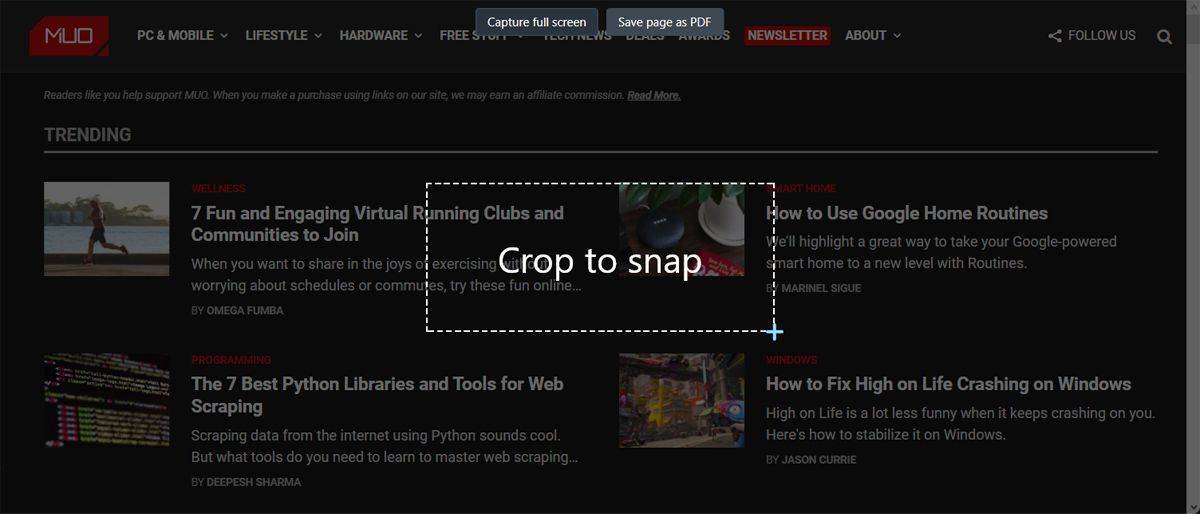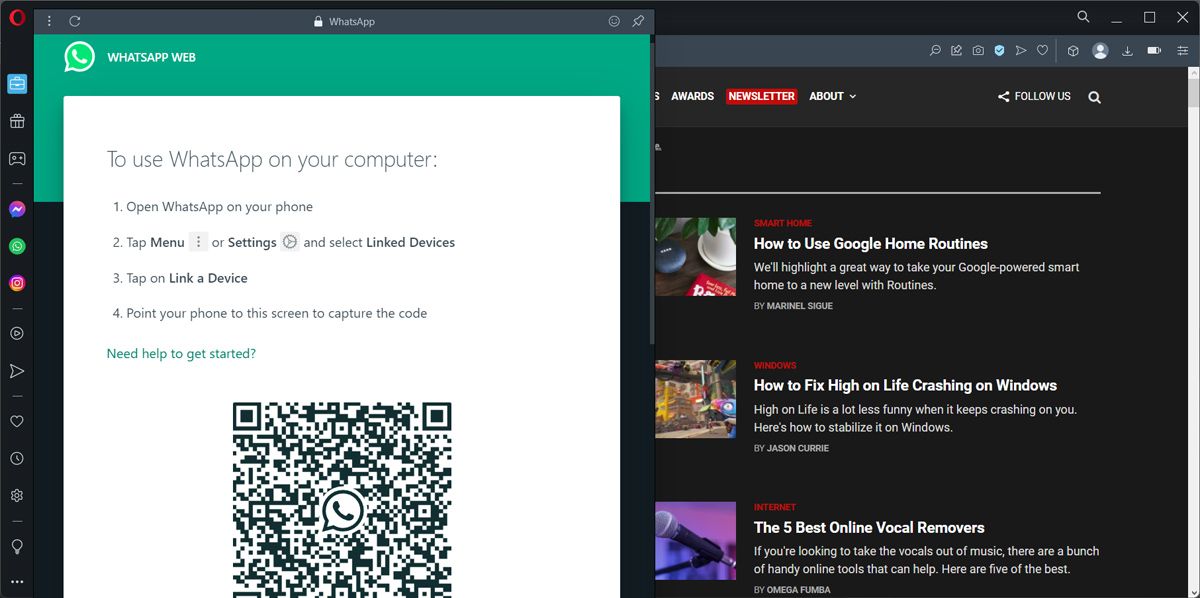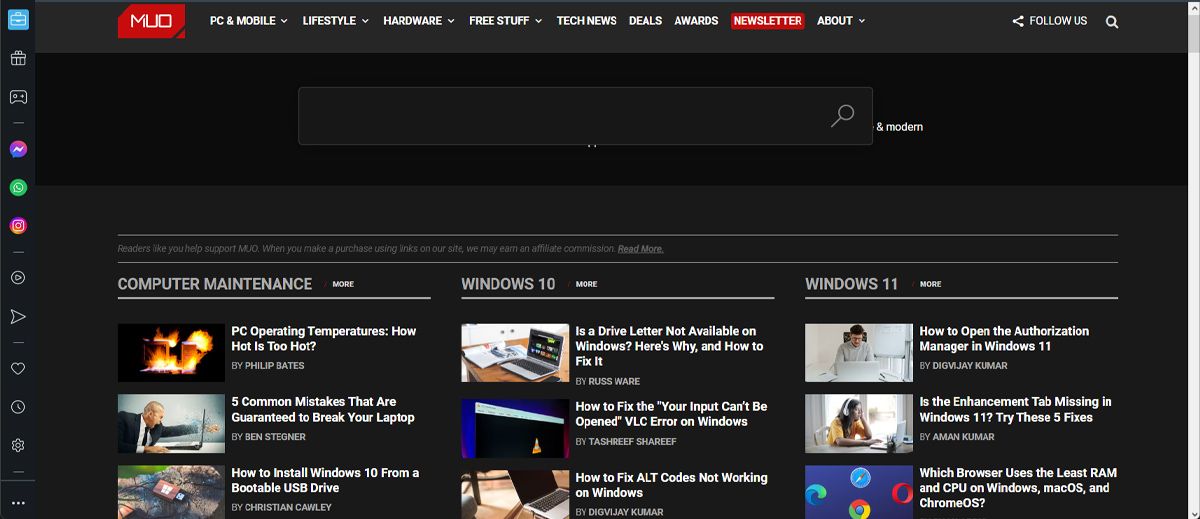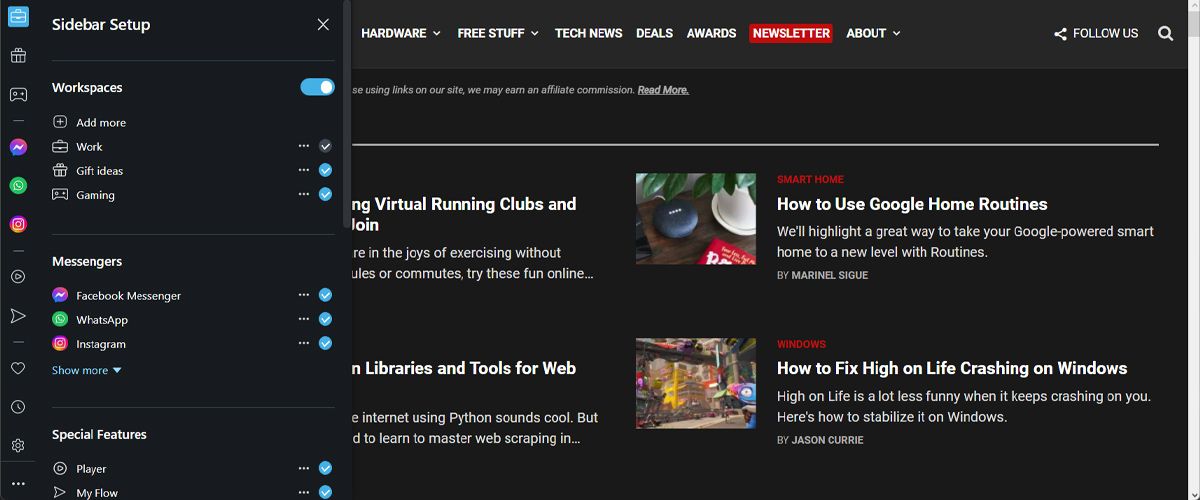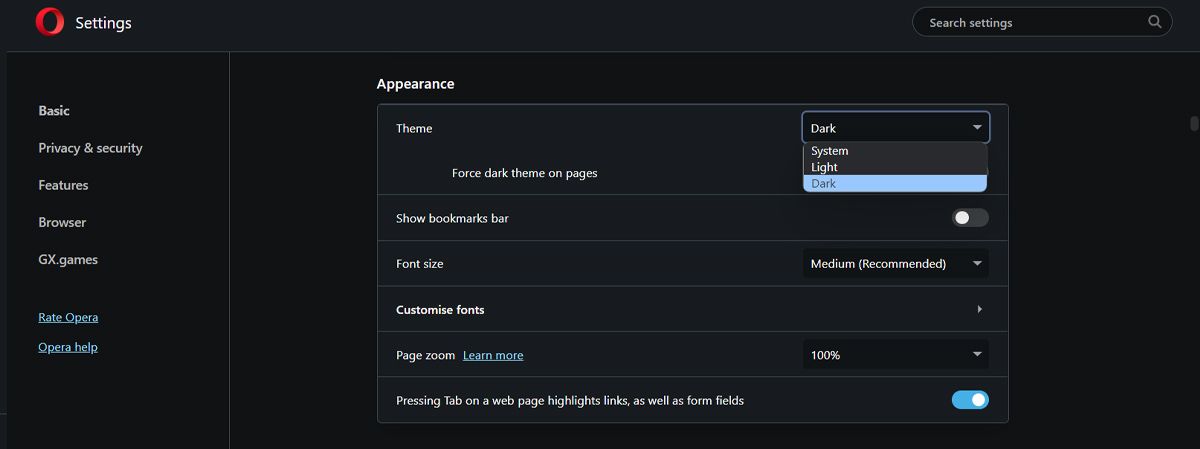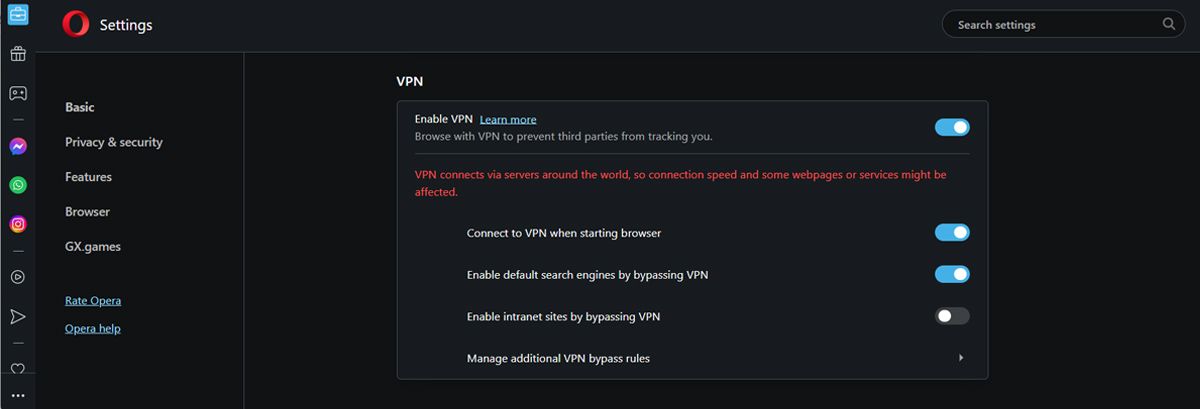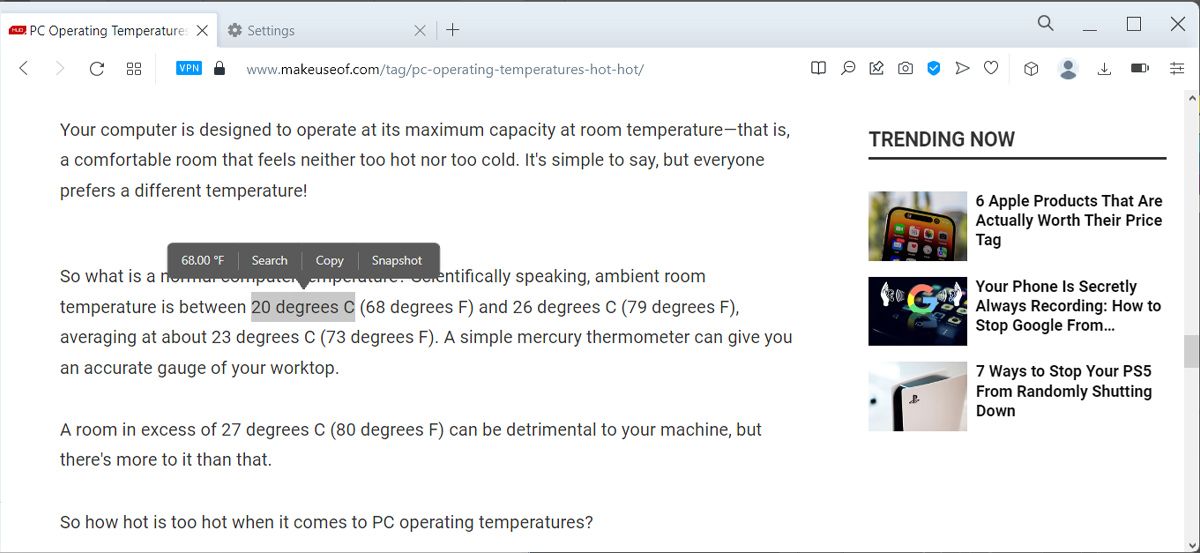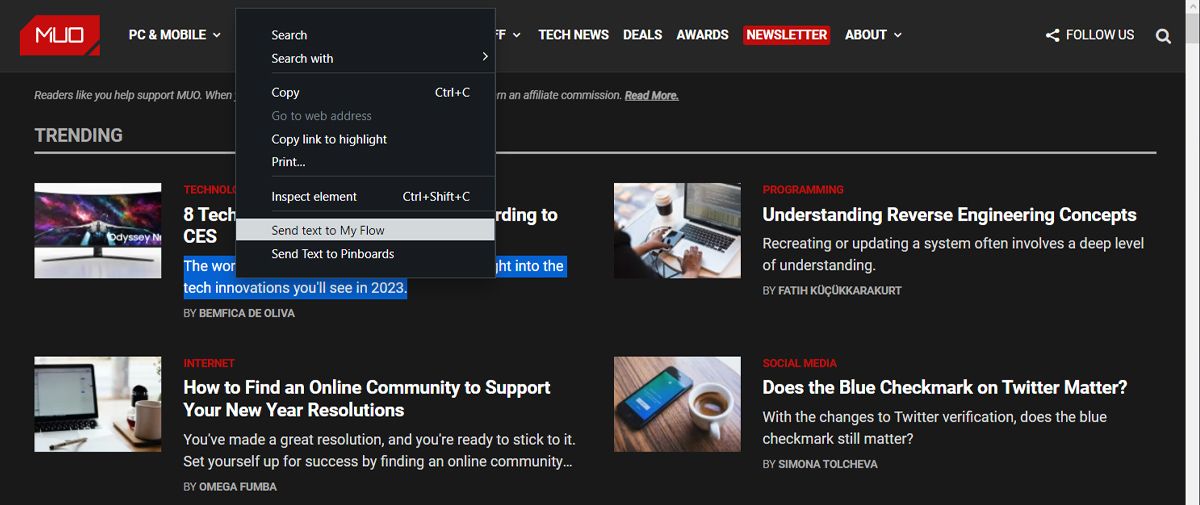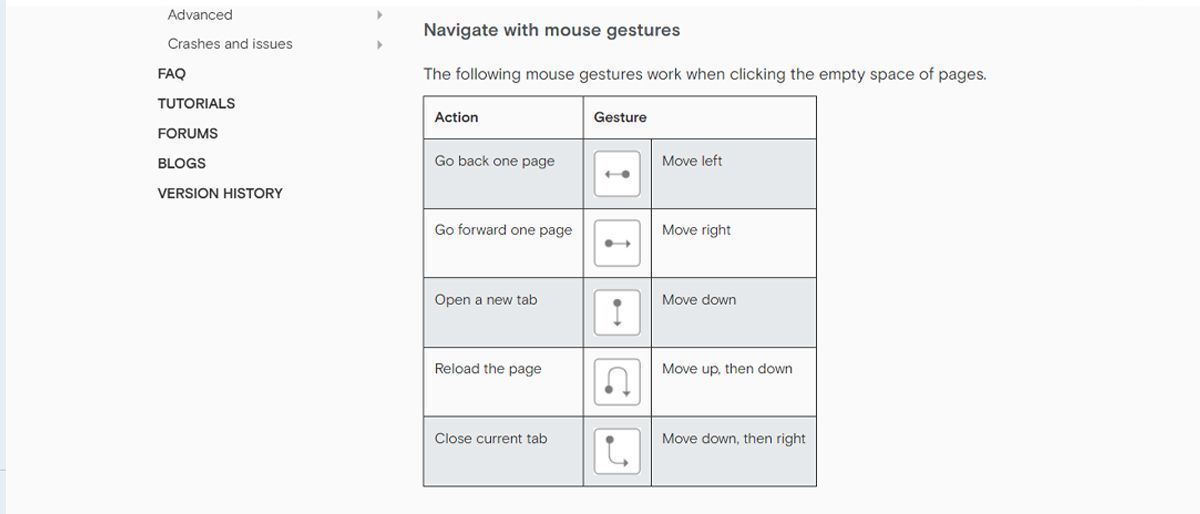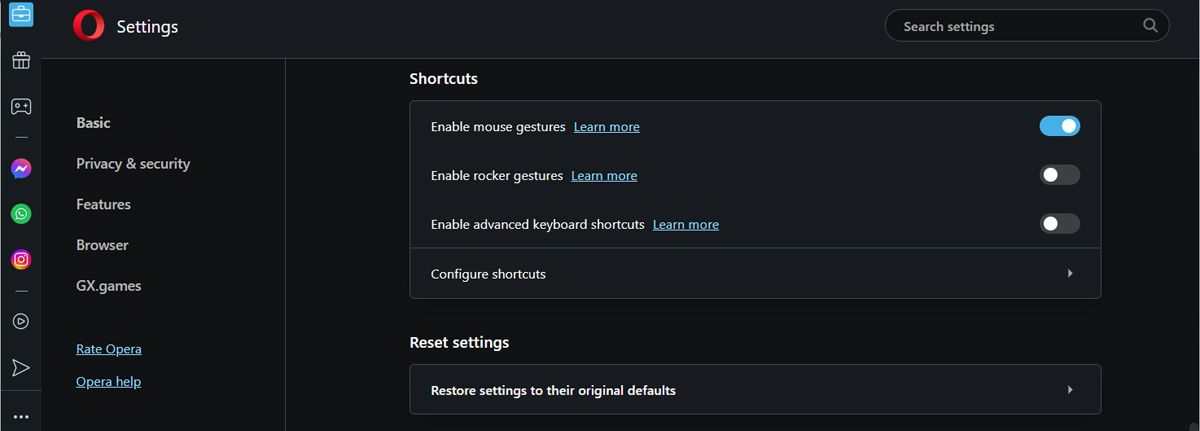Opera is one of the few, major browsers to survive in a market dominated by Google Chrome. With consistent updates and a wide set of built-in tools you wouldn't find on others, Opera has managed to thrive.
But Opera offers much more than what meets the eye. There are a host of other nifty features you probably don't know about. Here are nine of them.
1. Take and Annotate Screenshots Natively
Screenshots have become an essential means of communication online. Opera users, however, don't need a separate app to take or edit one. They can do so right from the browser with the built-in Snapshot option.
It can be triggered by clicking the little camera icon on the sidebar or pressing the Ctrl + Shift + 5 shortcut (Command + Shift +5 in macOS). You can either capture the entire screen or grab a portion of it.
Once done, Opera will bring up a preview screen where you can easily edit the image, add text, arrows, the works. If you don't want to save the file, you can even copy and paste it anywhere.
2. Link and Quickly Access Your IM Chats
Opera allows you to connect your instant messaging accounts to the browser as well. That lets you instantly access your conversations from the sidebar. It's compatible with a couple of popular services including WhatsApp, Facebook Messenger, Telegram, and Instagram.
To link your accounts, you will have to first ensure your preferred platform is available on the sidebar. If it's not, head into Settings, and under Manage Sidebar, switch it on. Then, all you need to do is tap its icon and Opera will load the login screen.
3. Instant Search
Opera also has a search shortcut if you want to look up something on the internet or jump to a tab. It's called Instant Search and it can be fired up either by tapping the search icon on the sidebar or pressing Ctrl + Space for tab search and Alt + Space (Option + Space on Mac) for web search.
With Instant Search, you can execute a query on Google or search an active tab by switching modes which itself can be done by pressing the Tab key. In case Instant Search is not enabled by default on your machine, you can turn it on from Settings.
4. Opera's Workspaces
How many times do you open multiple Opera windows just so you can separate your work and personal browsing?
If you often do this, you know it only makes you search through Opera’s multiple windows and tabs, just so you can add a new idea to a document or stop playing music. To make browsing simple, you could use Opera's Workspaces.
One could argue that Opera Workspaces are similar to using Firefox Containers. Every workspace holds the tabs that you opened while active in it. To switch between workspaces, you can use the browser’s sidebar. You can even name and customize Opera’s workspaces for easier identification.
To enable the feature, click the three-dot from the sidebar, and enable the toggle next to Workspaces. Then, you can add and configure new workspaces.
5. Dark Theme
If you've found Opera's design too bright for those late-night surfing sessions, there's some good news for you. The browser comes with a dark theme, which you can enable from Settings (Preferences on Mac).
The setting is situated in the Appearance section. You can also do it through the Easy Setup button present in the top-right corner of the new tab page. Switching to the dark mode revamps all the fundamental elements such as the bookmarks bar, settings page, and more.
Want to enable night mode on all the browsers installed on your computer? Thankfully, you can apply a dark theme on any major browser.
6. Protect Your Activity With Opera’s Built-In VPN
There’s a chance that you already considered using a VPN, but didn’t decide which one is the best VPN for your PC. Until you make that call, you should use Opera’s built-in VPN to protect your data while browsing. The VPN is 256-bit encrypted, has worldwide servers, and no bandwidth limit.
To activate Opera’s VPN, open the browser’s settings menu and click Privacy on the left pane. Then, scroll to the bottom of the page and click Advanced. Head to VPN and enable the toggle. You can also use the VPN in a private browsing window.
Of course, the browser’s VPN will not protect your activity while using other apps, so you should install a third-party VPN. Fortunately, there are a few free options.
7. Smart Text Selection
Opera has upgraded the usual text selection prompt with a few, additional handy extensions too. For starters, whenever you select a foreign currency amount, Opera will automatically convert it to your local one and show the result in the pop-up.
Opera is even compatible with a handful of cryptocurrencies including Bitcoin, Bitcoin Cash, Ethereum, and Litecoin. In addition, you can do the same with time zones and units.
From the Settings menu (Preferences on Mac), you can also specify which currency should it translate to. Although, at the time of writing this article, you can not tweak the resultant metrics for time zones and units.
8. Watch Any Videos in a Floating Window
Do you need to complete a work or school assignment but still want to watch your favorite YouTuber's live stream? With Opera, you can keep watching the video even if you switch to a different tab.
Click the Pop-out video button from the top of the video, and Opera will keep playing the video in its own floating window. You can move the window around on your screen, and when you want it to return to its original tab, click the button again. It works just like Picture-in-Picture on your mobile device.
9. Connect Your Phone and Computer With My Flow
For people who employ Opera both on their computer and smartphone, the browser has a continuity tool titled My Flow.
My Flow allows you to seamlessly share content across Opera Touch and desktop apps. You can push links, text, and even images. Plus, it's integrated into nearly every aspect of the experience.
For instance, if you come across an image online you'd like to send to your desktop, you can simply right-click and click the Send image to My Flow option.
Similarly, if you select a piece of text, Opera will bring up a My Flow shortcut in the pop-up menu. My Flow also doesn't need an Opera account to work. You just need to scan a QR code from your phone, and you're set.
10. Navigate Faster With Gestures
Apart from the keyboard shortcuts, Opera is compatible with mouse gestures as well. You'll need the right button for activating them. Hence, trackpads like the ones found on MacBooks aren't eligible for this.
To utilize mouse gestures on Opera, you will have to first enable them from Settings (Preferences on Mac). Now, after holding down the right key, you can perform a multitude of actions by moving the mouse in a certain direction. To go back a page, for instance, you will have to slide it towards the left.
What's more, Opera also has something called Rocker Gestures. These are specifically for navigating backward or forward through pages. They're a bit more complicated to master than the normal mouse gestures.
To go back, you will need to hold the right button, click the left one, and then release the former before letting go the second. For going forward, you will have to do the opposite.
11. Personalize Opera’s Keyboard Shortcuts
If you want to increase your browsing productivity or if you accidentally keep hitting the wrong keyboard shortcut, we have good news. Opera allows you to set your own keyboard shortcuts. Head to opera://settings and click on Browser. Then, scroll down to the Shortcuts section and select Configure shortcuts.
You can set new shortcuts for basic functions, browser extensions, special features, and workspace shortcuts.
Unlock Opera’s True Potential
The truth is, many of us keep using internet browsers in the same way we did years ago. However, Opera has plenty of features that will make browsing more fun, without having to rely on third-party apps or extensions for added functionality.
If Opera is your default browser, there are a few browser add-ons you could use to protect your privacy.


